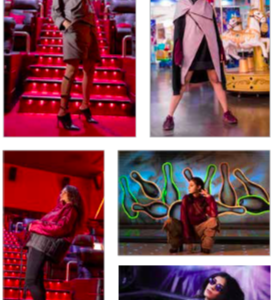Being art enthusiasts, you can understand our love for Indian traditional embroidery and the amazing history of embroidery in India. Every State of India has various types of embroidery, with detailed work and cool history behind them. From tribals to foreign influence, India’s culture brings various cultures together.
Did you know?
Embroidery is therapeutic! It is highly regarded as it keeps a person’s fine motor skills sharp and keeps your mind focused, helping you to improve your mental and emotional well-being.
Amazing, isn’t it! So without further ado, let’s look at the history of embroidery in India and some Indian embroidery designs for you to indulge in!
History of embroidy in India
Embroidery is an adornment of fabric that is enriched with a thread and a needle. Traditional embroidery designs in India are traced back to wall paintings and figurines in the Indus valley civilization, including sculptures.
Most of India’s embroideries can be classified into rural, tribal, folk, and Elite depending upon who executes and spreads them. Fashion is always evolving and one cannot deny the influence of traditional embroidery designs on many existing methods.
Also, guess what? The existence of the art of embroidery itself traces back to 30,000 BC during the Cro-Magnon days. China was one of the pioneers of this art (pretty close to India) and there are even fossilized remains of heavily hand-stitched clothing.
Trust us, embroidery is deep rooted in our history, making it even more essential for us to focus on how Indians developed it, specifically women.
So, let’s look into different types of embroidery names that are a part of the treasure trove of the Indian traditional embroideries.
10 famous embroideries of India
In one of our previous posts, we discussed a non-exhaustive list of 10 types of textiles in India. As India is rich in its culture and traditional embroidery designs, here’s another list of 10 famous embroideries of India.
-
Kashida

Kashmiri Kashidakari is one of the most famous embroideries in the Kashmir valley. In the 15th century, Sultan Zain-Ul-Abidin became a patron of the art of Kashidakari. Its base material includes wool, silk wool, or Cotswold, using a variety of colors. What’s more? The beautiful designs are inspired by the natural surroundings of Kashmir!
-
Kasuti
Kasuti is a feminine embroidery from the state of Karnataka. It hails from the Chalukyan period (have you seen Ponniyin Selvan? Chalukyas were indulged in wars with the Cholas a lot!), and woman courtiers in Mysore practiced it. It involves four kinds of stitches, namely menthi, gavanti, negi, and murgi. You can find Kasuti embroidery on many home products like cushion covers, curtains, bed sheets, etc.
-
Chambarumal

The embroideries on handkerchiefs originated in the 18th century, in Chamba which lies on the foothills of the Himalayas. The embroidery is done on mulmul, hand-spun, hand-woven, and coarser khaddar. The motifs generally portray the indigenous tales of Ramayana and Mahabharata and are inspired by miniature Pahari paintings. The designs can be seen on blouses, caps, slippers, etc.
-
Mirror Work

Don’t you love to wear mirror work blouses and clothes during Navratri? Iranian travelers brought this art to India during the 17th century and were originally done in mica and silver coins. Women artisans in Kutch and parts of Rajasthan and renowned for their mirror work. You can see this art everywhere, be it ghagra, blouse, dupatta, or denim jackets and jeans!
-
Aari
Mughals’ influence on Indian embroidery designs is undeniable! Aari’s work is practiced in Rajasthan, Lucknow, and Kashmir. Its embroidery contains chain stitch loops, using beads and sequins. It’s used in Sarees and focuses on the pallu or the body of the saree. The blouse is left plain providing comfort with fashion.
-
Banjara

Similar to Banjaras’s limitless presence across India, their style of embroidery is also present in various regions, giving it variations in style. The embroidery uses a brightly colored base cloth which motifs in geometric patterns. It includes a combination of patchwork and mirror work and can be found on suits, lehengas, bags, and blouses, with a successful fusion with western wear.
-
Zardozi

Agra is famous for this beautiful metal embroidery, initially used for the attire of the royals in India. Zari work is done with silver and gold metal wires, which are sensitive to the atmosphere and can make the weave appear dull and dry. Usually, the metal embroidery is done on silk, satin, or velvet fabric and incorporates pearls, beads, and precious stones.
-
Parsi Gara

Parsi Gara is one of the famous Indian traditional embroideries, and its embroideries are said to be influenced by Persian and Chinese works. The original fabric used for the designs was called ‘Sali Ghaj’ however now Crepe de Chine is used. The Parsi community, especially the women, usually wears this design during the wedding season!
-
Toda

Tamil Nadu is famous for this distinct style of embroidery which is done by tribal men and women on shawls. The shawls having Toda embroidery are called Poothkuli and the motifs are worked by counting the threads. Cotton is used as a fabric and the colors of the threads are red and black. It is inspired by regional mythological stories and reflects the flora and fauna of the region.
-
Tilla

Tilla embroidery is another traditional craft of Kashmir which adorns pherans, shawls, sarees, and other garments. It also requires gold and silver metal thread. Tilla has high importance during weddings and forms an essential part of the trousseau of the Kashmiri bride. This traditional Indian embroidery design gives a sharp, elegant look.
Indian embroidery designs can be either made into personal wear or as household/ professional decorative accessories. So what are you waiting for? Join us as we explore the world of traditional Indian embroideries, learning how to make our days better and how to uphold our rich culture and heritage!
How can ISDI help:
We understand how fun it is to learn about Indian traditional embroideries, and hence we welcome you with open arms!
ISDI offers various design programs such as Strategic Design Management, Product Design Fashion Design, Fashion Communication and Styling, Interior Design and Strategic Design, Communication Design, and Management. Pursuing one of the degree programs, that is, Bachelors in Design (BDes) – 4-year program or Postgraduate In Design (PGDI) – 11 months program. Either of the programs is an alternative to a career in fashion and design.
The ISDI campus is located in the business district of Mumbai, the commercial center of India. ISDI consists of a curriculum that is based on that of the Parsons School of Design, experienced and industry-leading faculty, and practical project-based training, all situated on a state-of-the-art campus. ISDI is just the right place for someone looking to start a career in design.









